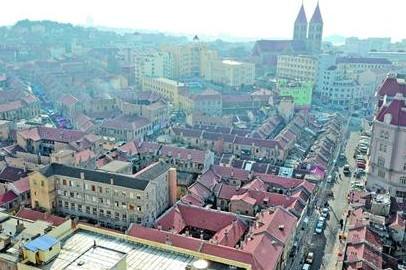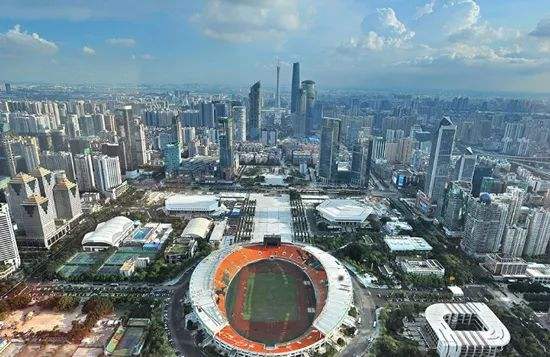Beijing’s expansion is centered on the old city
7 min readIt was decided in the city planning of an earlier stage after liberation that the reconstruction and extension of Beijing should centre around the old city.Today Beijing’s new urban districts have broken the bounds of the former city walls and expanded in every direction.The limit of extension was roughly set at the third suburban ring road which is now under construction within this limit the layout of the streets was to retain,on the whole,the traditional pattern Beyond it,the main ines of communication were to radiate in all directions.the plane design of the city preserved the traditional character of balance and symmetry,thus enhancing the outstanding position of the Tian An Men Square which used to be a court square in front of Tian An Men,the south gate of the old imperial city.It was nominally a gate but in reality,an imperial palace built on a purple terrace.The artisans who undertook the construction of Tian An Men have bestowed upon it such majestic beauty as to illustrate fully the characteristic of ancient Chinese architecture the feudal emperors aim in building such an enormous structure on this spot was not merely for the sake of fortification,but also to display the dignity of their kingly abode.According to the distinguished foreign guests and celebrations of grand occasions took place.the laty tradition of feudal dynasties,here was the So-called outer court where receptions feudal dynasty,the Qing Dynasty,also used this”outer court to celebrate the issuing of the imperial edict on the coronation day that is,to publicise the coronation of a new emperor to the subjects of the king o tian An Men from the Forbidden City in a m.the imperial edict was placed on a tray miniature”Dragon Pavilion”.Then,jubilant music was played on Tian An Men,whose square was strewn with prostrate civil and military officials and”elders”chosen and dispatched here to represent the common people.After the edict was read by the Edict Reader on Tian An Men,it was placed in the beak of a carved golden phoenix and lowered slowly down along the middle of the gate where it was put back into the Dragon Pavilion”again and carried to the”Ministry of rites”to the east of the square where fair copies of it were made in yellow paper and distributed to the whole kingdom.The sole purpose of this ritual performance was to show that the divine rights of monarchs came directly from the heaven this is only an illustration of how feudal emperors used this court square to make a display of themselves and fool the The square was somewhat T-shaped and closely confined by red walls all around,eaving only one entrance on every side for passage.These entrances,however,were strictly forbidden to the common people.

But the dialectics of history is relentless.When the Qing dynasty was overthrown in 1911,it was this square which had been so strictly forbidden to the ordinary people that became the rallying centre of the revolutionary masses for patriotic demonstrations.And it was here,some sixty years ago,that the May Fourth Movement,which set the new democratic revolution ablaze,broke out Again,it was 1-9 Tian An Men Square before redevelopment Due to this glorious revolutionary tradition,the Tian An Men Square was chosen to be the site for the grand founding ceremony of the People’s Republic of china on October 1,1949.Subsequently Tian An Men,the magnificent structure erected by labouring people in ancient times,was engraved on the national emblem of the republic to symbolize the renaissance of an ancient culture. The square has been transformed from a feudal court square into a people’s square in the new socialist epoch. It has now become the centre of the country’s political life, cherished by people of all nationalit.
But, at the time when the founding ceremony was being celebrated, the square was still confined on all sides by walls which seriously hindered popular activities by obstructing their sight and compressing their hilarious atmosphere within the square As we look at it today, Tian An Men represents the essence of ancient Chinese architecture whereas those walls represent the dregs of feudalism. We must preserve the essence part and, according to the principle of making the past serve the present and weeding through the old to bring forth the new, weave it into the urban life of must discard them in order to clear the way for our advance towards a new ife the present day, so that it may better serve the people. As to the feudal dregs, we On October 1, 1959, when we celebrated the tenth anniversary of the founding of the republic, the first transformation project of the Tian An Men Square was brought to a successful termination in accordance with the new city planning programm After the reconstruction, the old walls on the three sides had disappeared and an entirely new square, many folds larger than the old one, presented itself to the public It remains on the same premises, but has taken on a brand new appearance. Its magnificent, solemn, spacious and shining physiognomy is the embodiment of the ocean-like mind and overwhelming power of the people. The Monument of the People’s Heroes towering in the centre of the square, had been completed a year before. With the People’s Conference Hall that represents the centre of popular power on its west side and the museum of chinese revolution and the museum of chinese History which serve to praise the people as the motive force in history-making, th square has become the heart of the political life of China’s various nationalities, whence were spread abroad the aspirations of the Chinese people During the reconstruction of the square, its two wings, the East and West Chang An Streets, were extended accordingly. Thus, the great smooth boulevard now forms a new thoroughfare threading the whole city from east to west. By contrast, it has definitely belittled the traditional thoroughfare which runs across the old city from south to north This is as good as thoroughly negating the theme in the design of the old city, thus giving prominence to the unique position of the people’s square in the plane layout of the whole city. The Forbidden City, which perched imposingly in the centre of the city during the old days, is now but a”backyard”of the people’s square where only in spare time do people come and enjoy themselves in appreciation of the magnificent palaces built by the labouring people of ancient times and the gems of art in store there square was further expanded and endowed with new significance, adding to the When Chairman Mao’s Memorial Hall was completed in July 1977, the people serenity and tranquility of the south end. The lofty antique building of Qian Men(or Zheng Yang Men) has been preserved as well as the majestic Tian An Men. But these two age-old gates have now lost their former function as vanguards of the Forbidden City. They now serve with their artistic features as boundary marks of the new people s square on its south and north borders respectively. Once the thoroughfare–South Qian Men Street–from Qian Men to Yong Ding Men is expanded, the prominence of the Tian An Men Square as the centre of the whole city of Beijing will be further enhanced.

The square, which is now still undergoing further planning is only an example to llustrate that if we persist in critical inheritance on the basis formed in the course of history and in accordance with the principles of making the past serve the present and weeding through the old to bring forth the new, a court square whose theme it was to extol feudal emperors can certainly be transformed into a people’s square whose theme it is to praise the strength of the people. By analogy the city of Beijing whose theme it was to extol feudal emperors, can likewise be transformed into a people’s capital whose theme it is to praise the strength of the people But we must also acknowledge that there did arise controversies in regard to certain measures taken during the transformation of the old city although the demolition of the outer red walls enclosing Tian An Men Square did not give rise to any dissent, it was not the case with that of the old city walls. When the question of removing the old city walls was first taken into consideration in the new city planning, opinions varied. Now that the city walls have already been removed, we have come to realize through the test of practice that whether it was absolutely necessary to get rid of them is indeed a question worth investigation, especially when part of the city moat has been turned into an undercurrent with their removal, thus reducing the water area in the city, which has proved detrimental to the improvement of its environment It was particularly true with the moat outside Qian Men which runs through the middle of the city from west to east. If it had been preserved, it would not only have added to the natural beauty of the city, but also promoted its climate conditioning and helped to provide the city with fresh air, which would be extremely advantageous to the improvement of the city’s environment and would supply its residents with excellent recreation ground.








